I think I’m becoming obsessed with the fjords of Norway. Or is it fiord? Actually either is okay as I learned. Does it really matter? I’m in love. My bucket list grows longer every week.
The western coast of Norway happens to be fjord country. There are actually 1190 fjords in Norway. Whaaattt?
That’s a lot of fjords. But we’ll stick to just a few to learn some basics about these iconic symbols of this fascinating Scandinavian country.
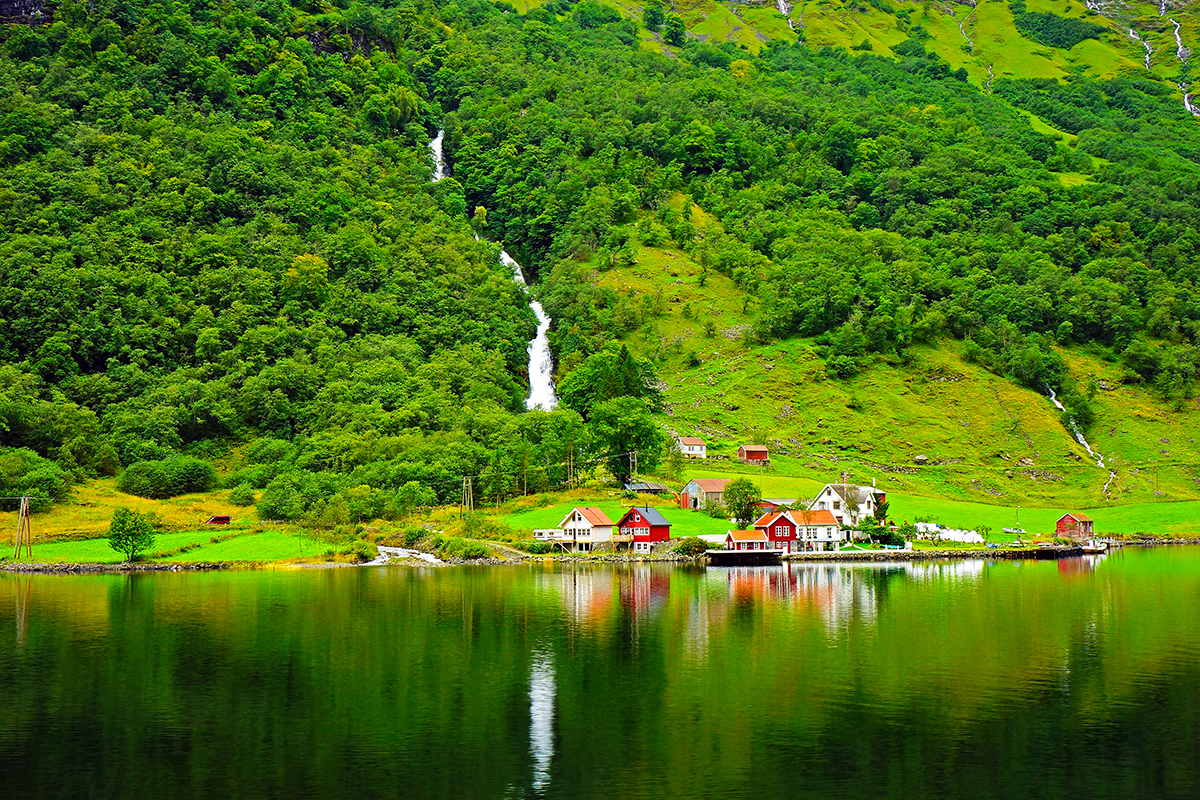
Songnefjiord area. It’s so green and look at that waterfall!
What is a fjord?
A fjord is defined as a long, narrow inlet with steep sides or cliffs created by glacial erosion. While you can find fjords in New Zealand, Scotland, British Columbia, Alaska, Chile and Iceland, Norway is probably the most known for its fjords.
Let’s learn a bit more about Norway’s fjords.
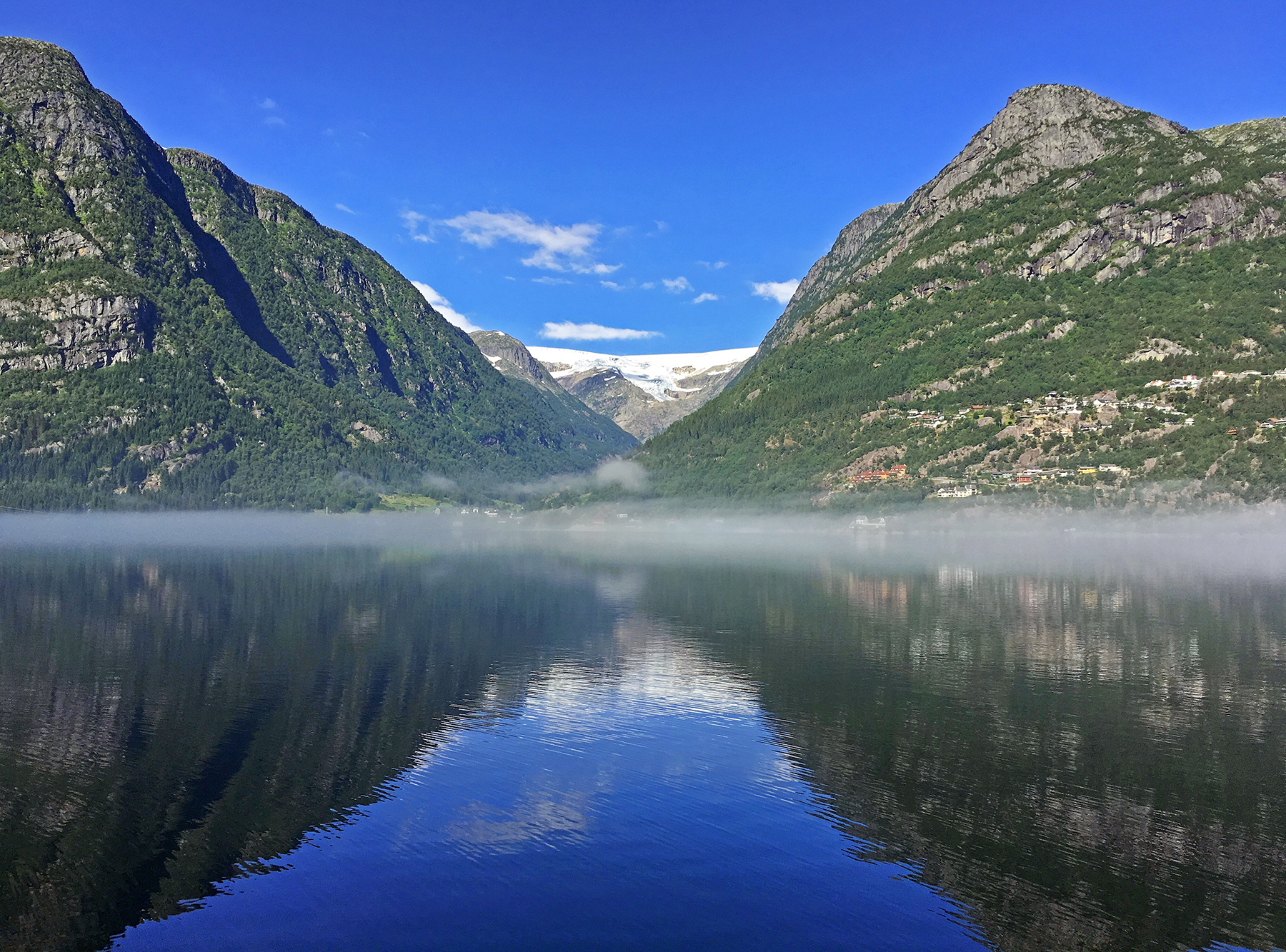
Breen Glacier in the distance in the Norway fjords
First of all, getting to these fjords is not as difficult as you might think.
Public transportation is good. Trains, busses and ferries will get you to the wonderful towns and villages that dot the coastline of these magnificent fjords. Having a car will get you to even more places that maybe aren’t reachable by train or ferry. And you’ll be able to drive the National Tourist Roads such as Trollstigen and take in the impressive engineering of the Norwegians (along with the surrounding natural beauty).
Of course, getting out of the car or train or ferry and doing some walks and hikes is a wonderful way to see the fjords. Or rent a kayak or join up with a kayak tour. I’m betting you’ll enjoy the slow pace and you won’t even notice your shoulders are sore from all that paddling.
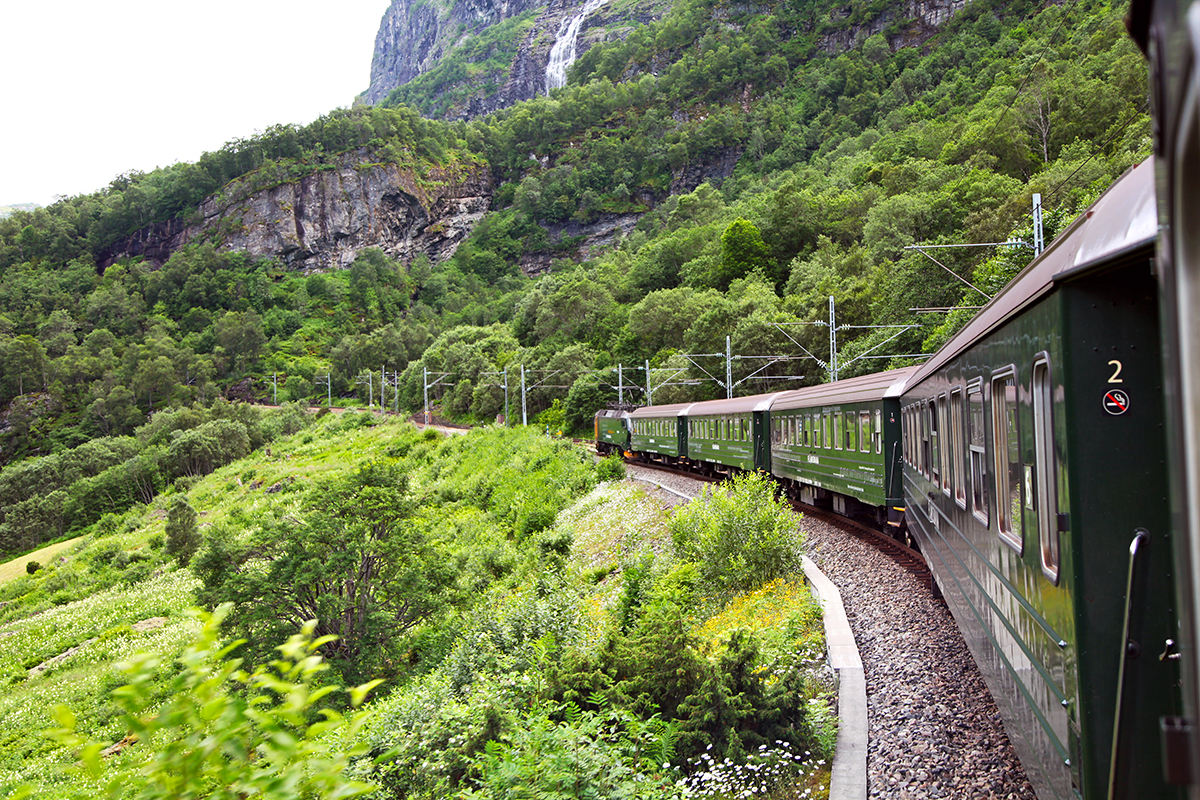
Train in fjord country, Norway
Geirangerfjord
This UNESCO World Site is one of the world’s deepest and longest fjords. And it’s definitely one of the most stunning with its S shape serpentining its way toward the village of Geiranger where the fjord ends. It’s popular with cruise ships. But don’t let that stop you from visiting. It’s breathtaking!
Waterfalls such as the Seven Sisters, the Suitor and the Bride’s Veil cascade down from the steep cliffs. The landscape is green and lush in summer.
There are walks and hikes in the area as well as opportunities for biking, kayaking and fishing. However if you want a more leisurely pace, you can always hop on one of the ferries and see this incredible fjord from a boat. Be sure you have your camera.
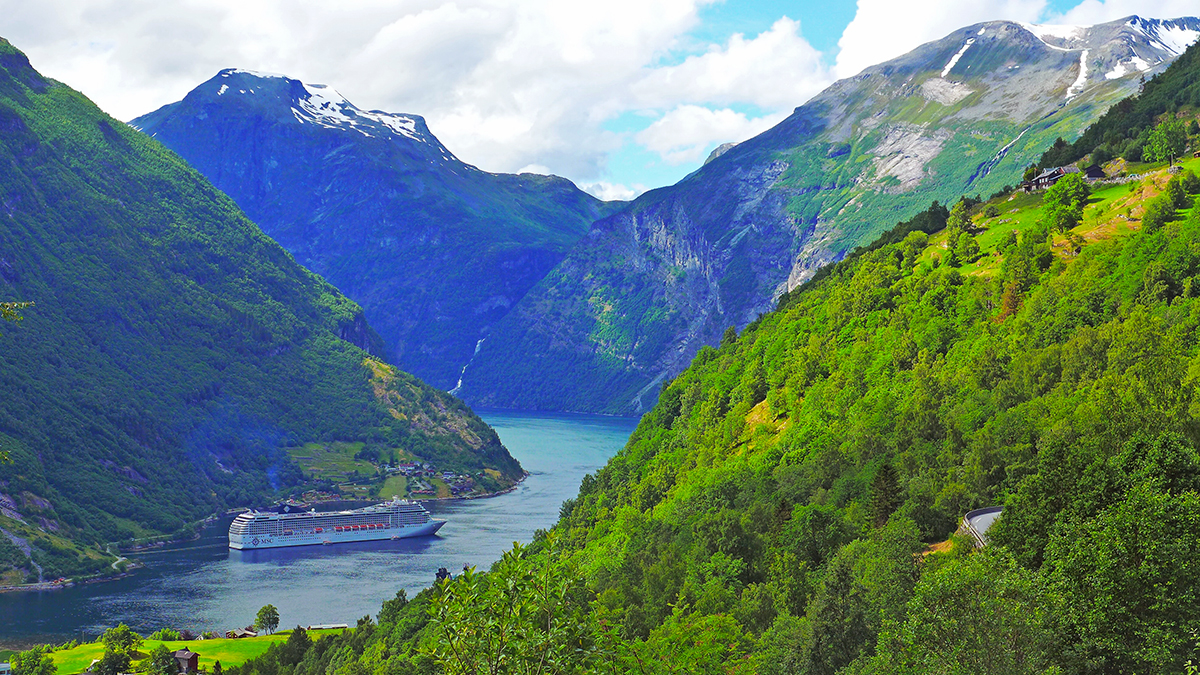
Geirangerfjord, Norway
Sognefjorden
The best known, most popular and largest fjord in Norway really shouldn’t be missed.
The Sognefjorden lies south of the Geirangerfjord and just a bit north of Bergen, Norway’s second largest city. It has several unique arms to it, most of which are surrounded by steep mountains and end with charming villages.
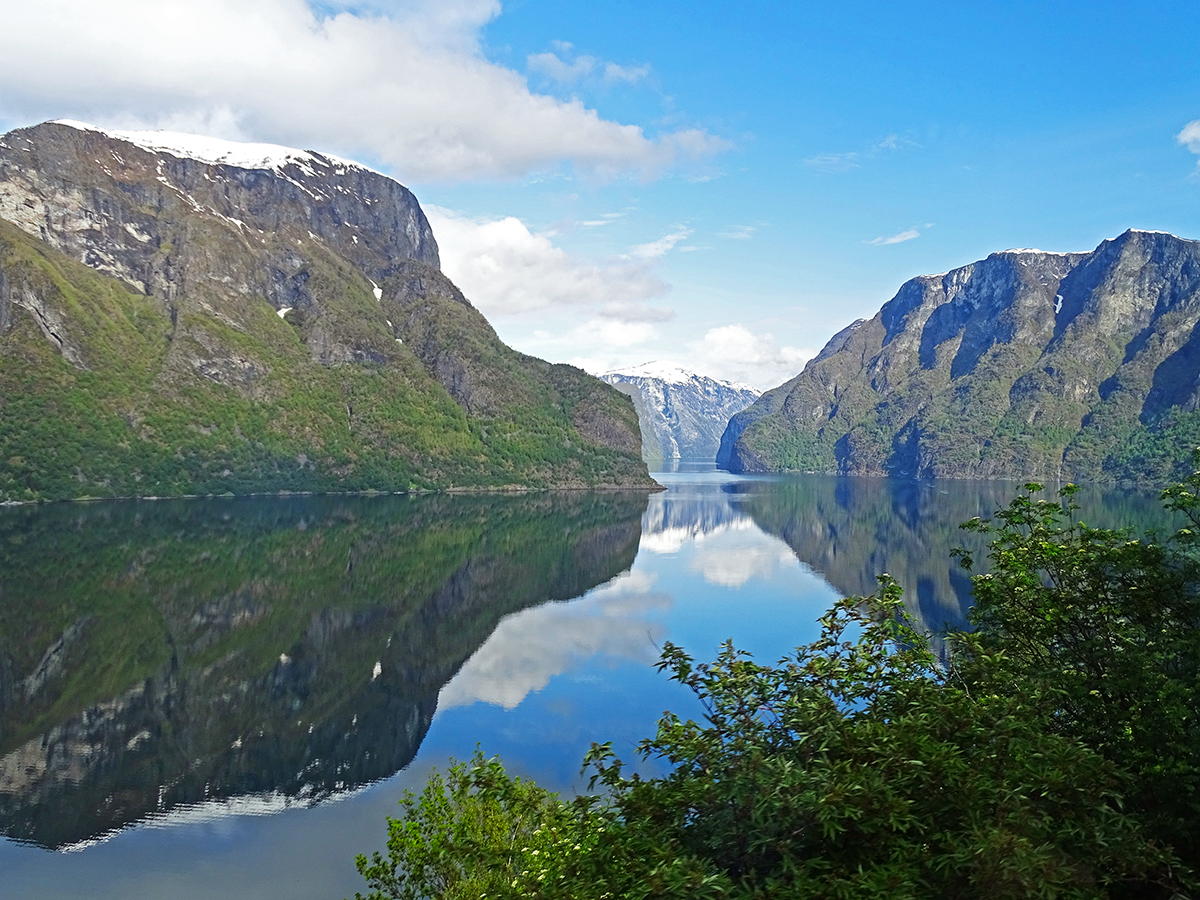
Sognefjord, Norway
The Nærøfjorden is one of these arms of this larger fjord that is also on the UNESCO World Heritage list. It’s particularly narrow — only 250m wide at some points — and as such, quite dramatic. The best way to see this arm of the Sognefjorden is by kayak or boat/ferry.
Other arms of this gorgeous fjord include Lusterfjord, Fjærlandsfjord and Finnafjord. The water in these fjords is a dazzling emerald-green due to the melting of glaciers.
The Sognefjorden is popular with hikers. There are a couple of national parks in the area with spectacular scenery and fabulous hikes for all fitness levels. Jotunheimen National Park has a good hut system where you can hike hut to hut and Jostedlsbreen National Park has its glacier that you can walk on.
This area has some incredible food as well with many traditional dishes. It’s known for its delicious fruits, especially berries, lamb, game, mountain trout and goat cheese. The folks of this area know how to use these fresh, local ingredients to make some tasty dishes.
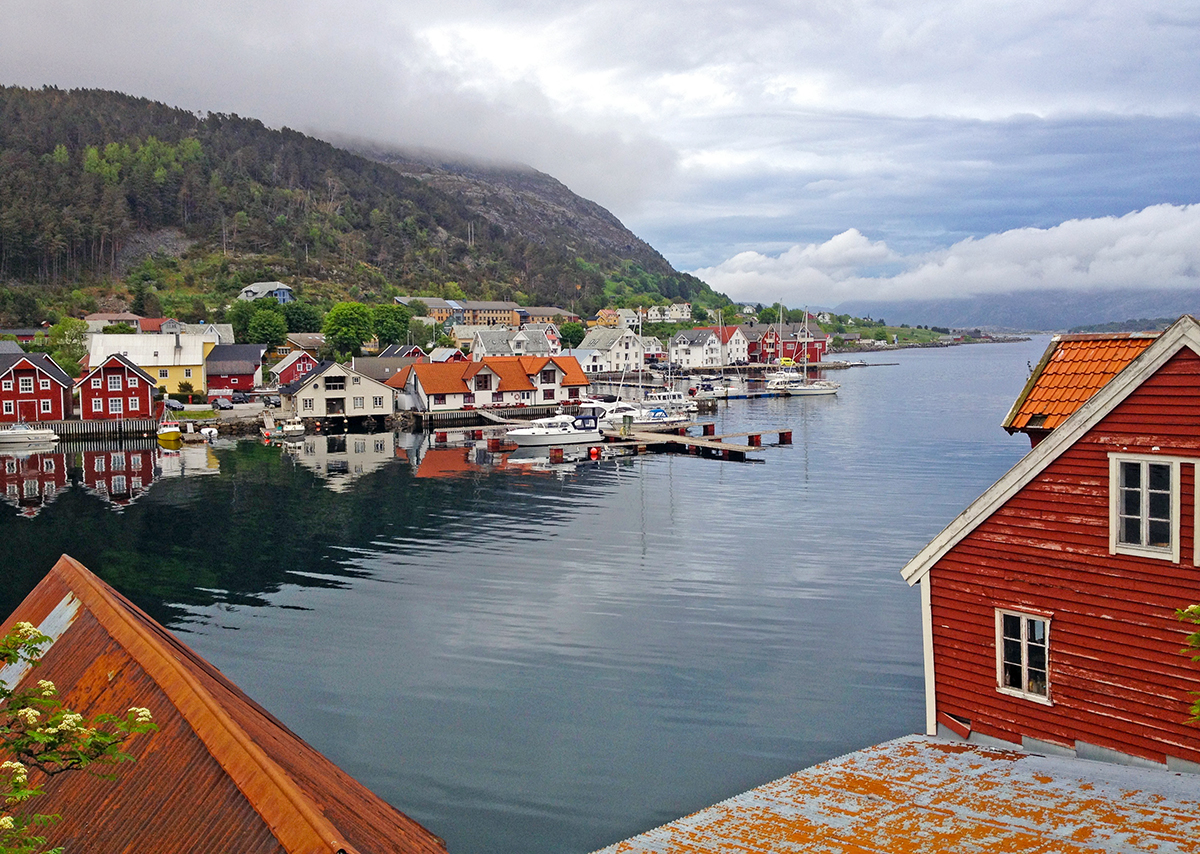
Kalvag, one of the towns of the Sognefjord
Hardangerfjorden
This fjord, the second longest in Norway, is located southeast of Bergen.
The Trolltunga or Troll’s Tongue is one of the most famous sites of the area. You’ve probably seen this before.
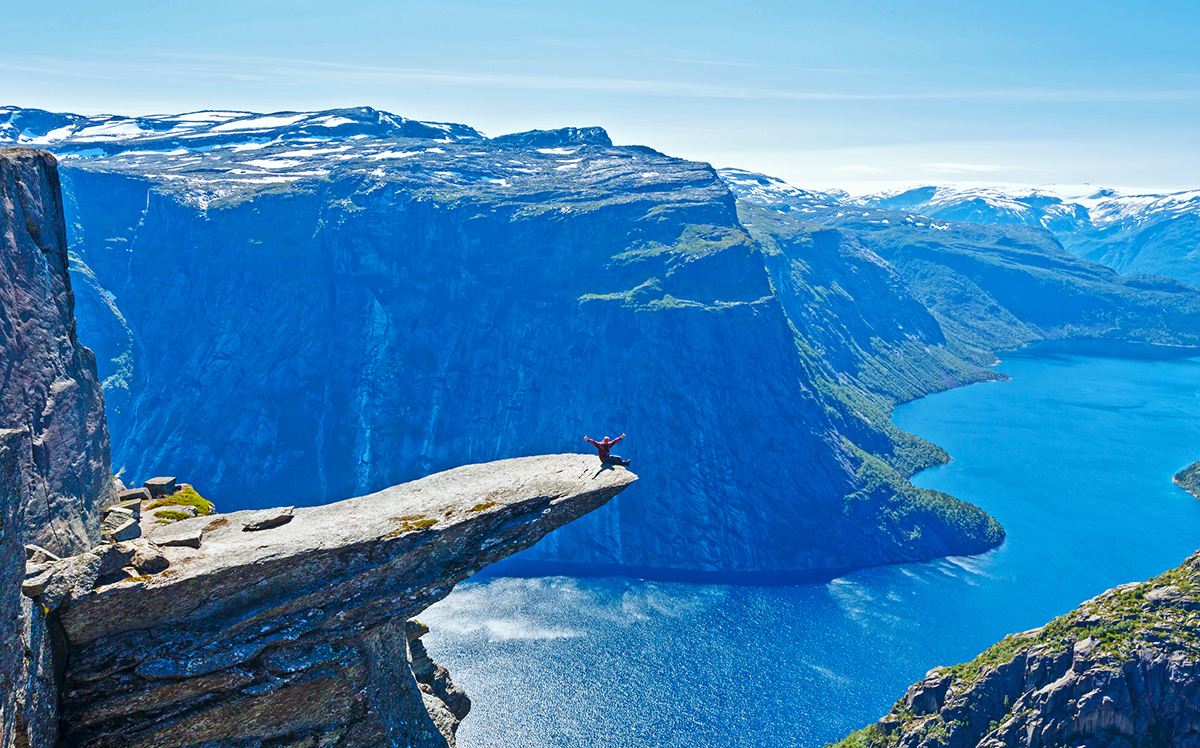
Trolltunga, Troll’s Tongue, in Norway. Photo courtesy of Yuriy Brykaylo | Dreamstime.com
Yup, me too. Kinda scary. But folks love it — maybe too much as there is often a queue off to the side waiting to get on it. And inevitably, there was a death in 2015. Count me out, but I get it. It’s pretty amazing.
Hardangerfjorden has loads more to offer beside the Troll’s Tongue. Hiking is well-marked in the area. You can hike to the 4 waterfalls of the Husedalen Valley and Hardangervidda National Park. And if you want to hike cabin to cabin and stay overnight, you certainly are welcome to. The scenery is stunning!
Naturally one of the most relaxing ways to see this fjord is via a boat or ferry. But if you want a little more action, rent a kayak or take a kayak tour.
This area is culturally rich too. This is where the Hardanger fiddle was first made. Here in Hardangerfjorden you’ll find the Hardanger bunad, a traditional costume worn by the locals for special occasions and festivals.
Hardangerfjorden is also known for its apples, and in particular, its strong apple cider. Yum!
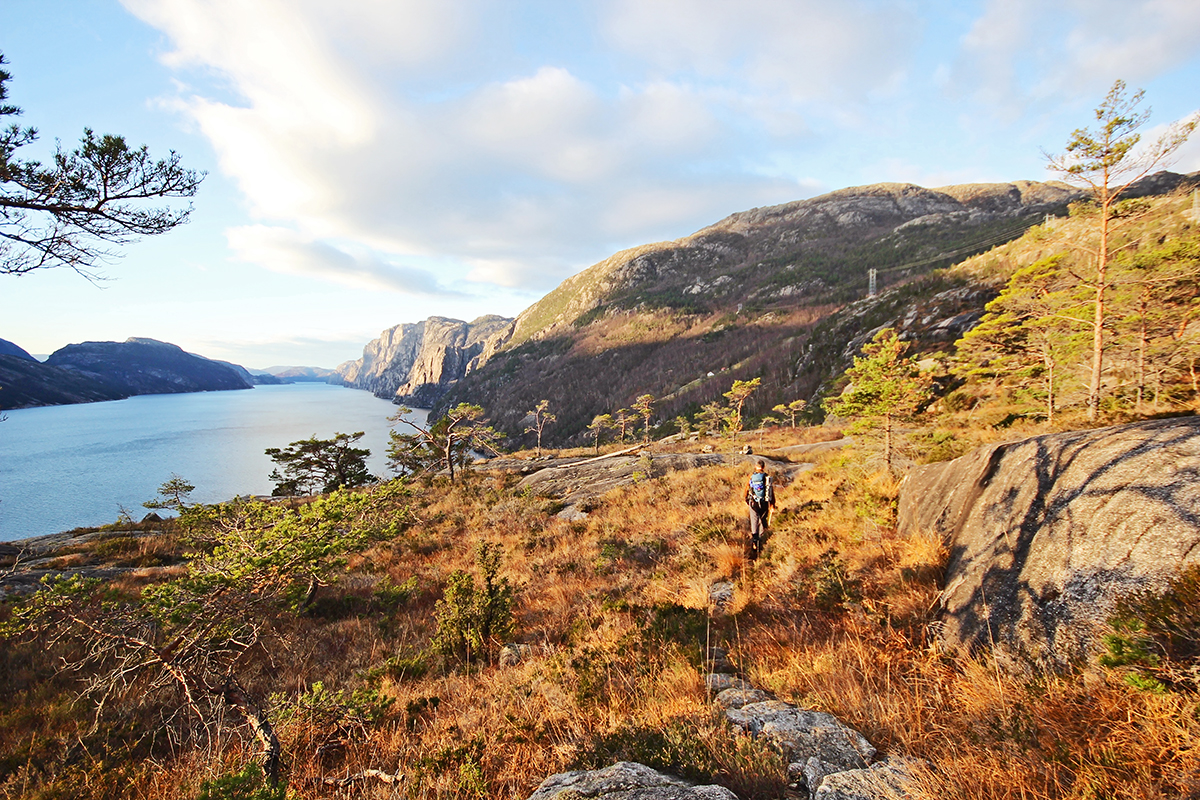
Hiking around one of the fjords of Norway
Lysefjorden
While there are more fjords to discover, Lysefjorden is the last one I’ll cover.
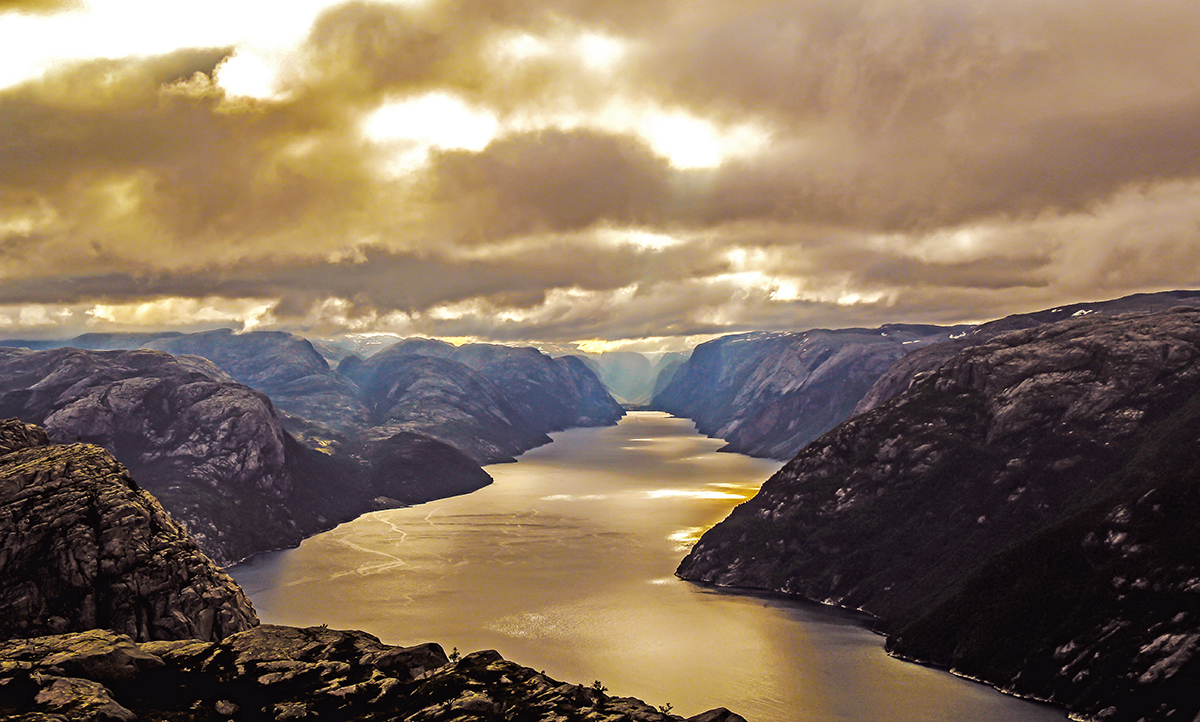
Lysefjord with beautiful light
This is one of the most famous of the fjords of the Stavanger region which lies south of Bergen. Lysefjorden is roughly 42km long with some rock walls reaching 1000m in height. There are some well-marked trails on either side of the fjord that make for fabulous ways to take in the beauty of this fjord.
One of the most popular hikes is to Preikestolen or Pulpit Rock. It’s about a 4 hour round trip to this flat-topped plateau. The views are outstanding.
As with all the fjords it’s entirely possible to see it by boat or ferry or kayak for those who are more adventurous. And the small villages and towns that dot the coastline are fabulous destinations to have a delicious meal and learn more about the locals and the culture.
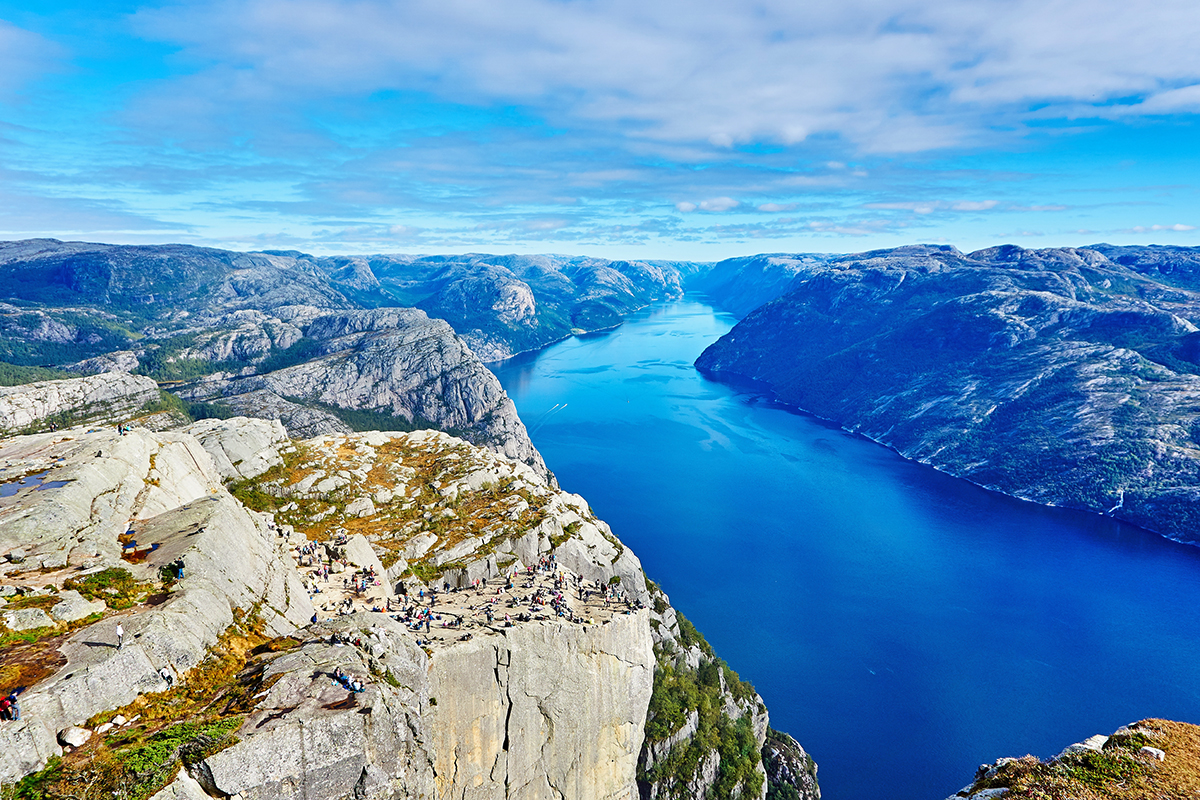
Lysefjord and Pulpit Rock
The fjords of Norway are unique.
And they have a distinctive culture and rhythm of life.
The food is special too, with lots of fresh fruit growing here. Bet you’re surprised by that. Obviously there’s loads of fish, but wild game and sheep also play into local dishes.
Each village has its own, one-of-a-kind history, culture and traditions.
But all together this western part of Norway, the Fjord Region, is truly spectacular. It’s breathtaking. And it’s a destination that will stay with you forever.
Photos courtesy of Pixaby unless otherwise noted.

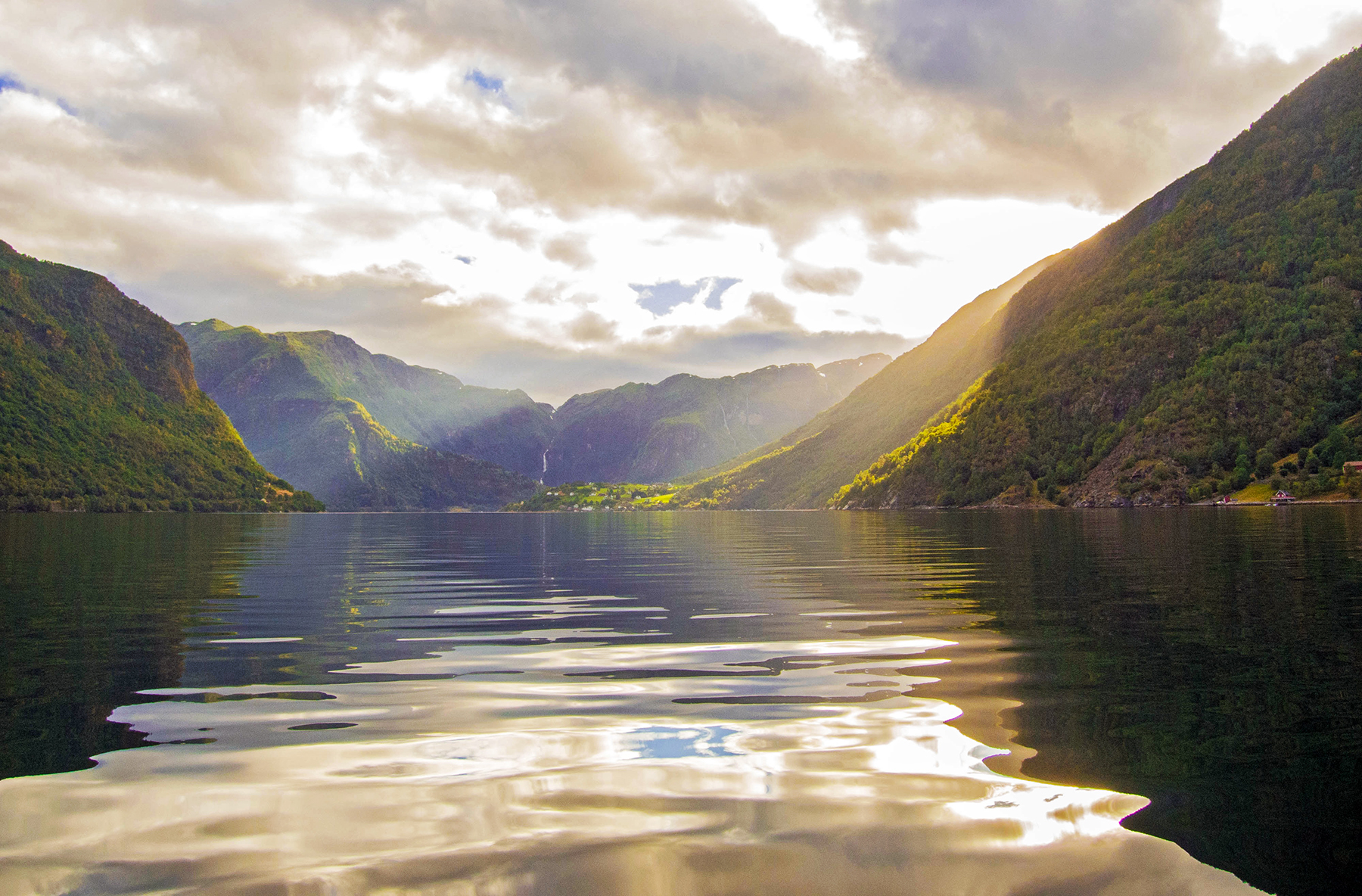






I want to go to there. My grandfathers family hails from Norway. I can see how the transition wasn’t too hard to the Pacific Northwest! Just gorgeous.
Every image that I see just makes me want to dive into the photo!! You should go, Danielle. Put it on the Danielle and Jake world tour!